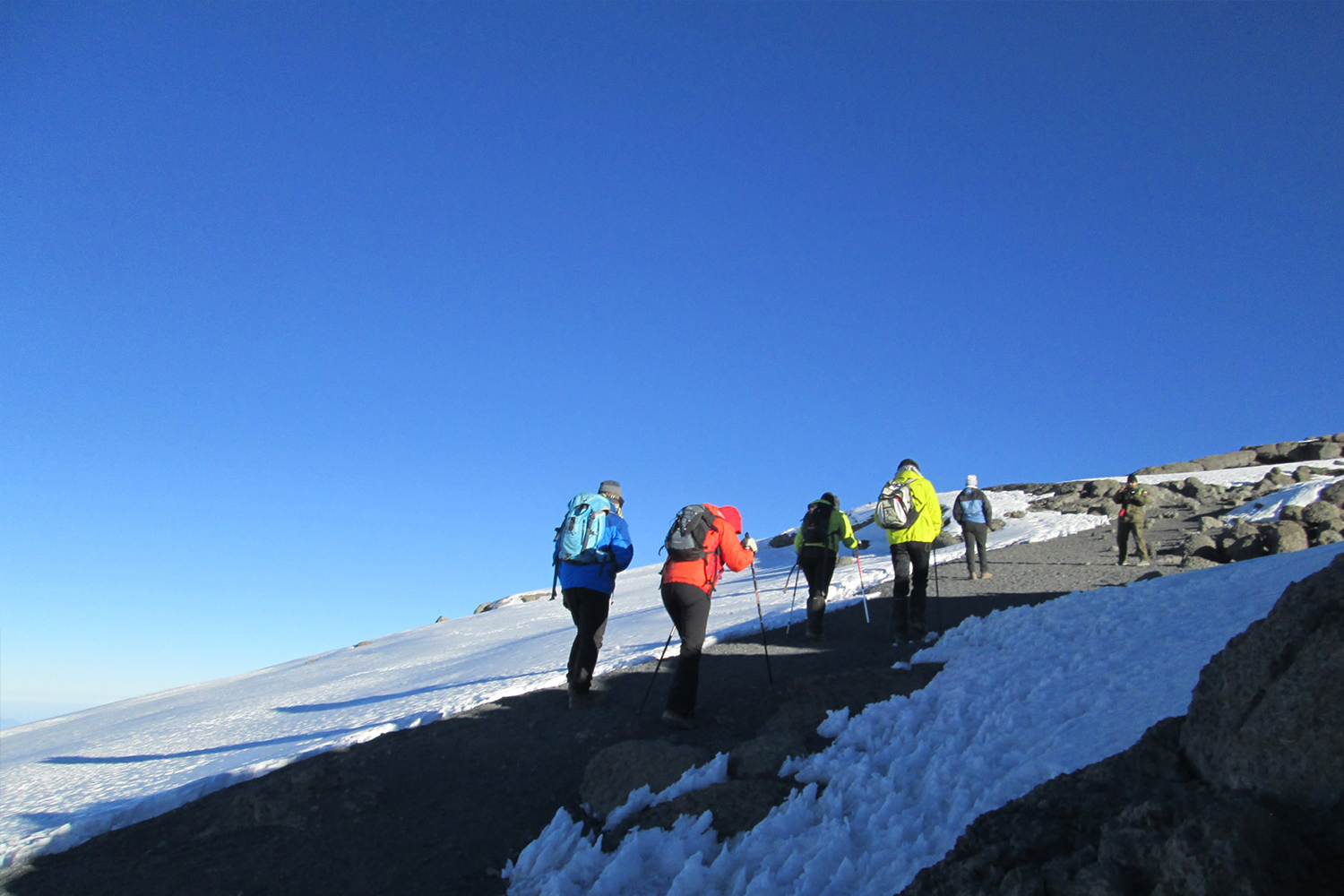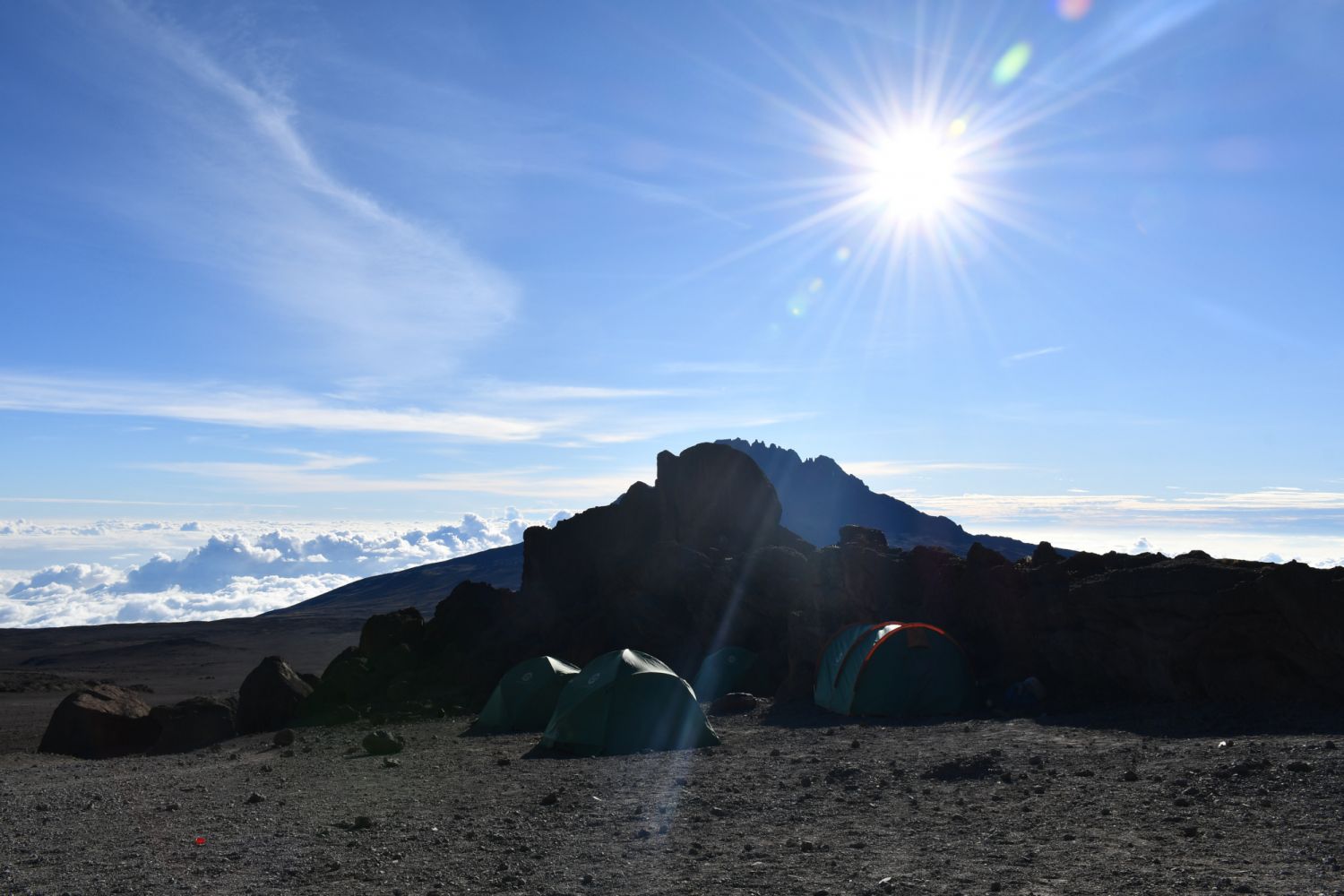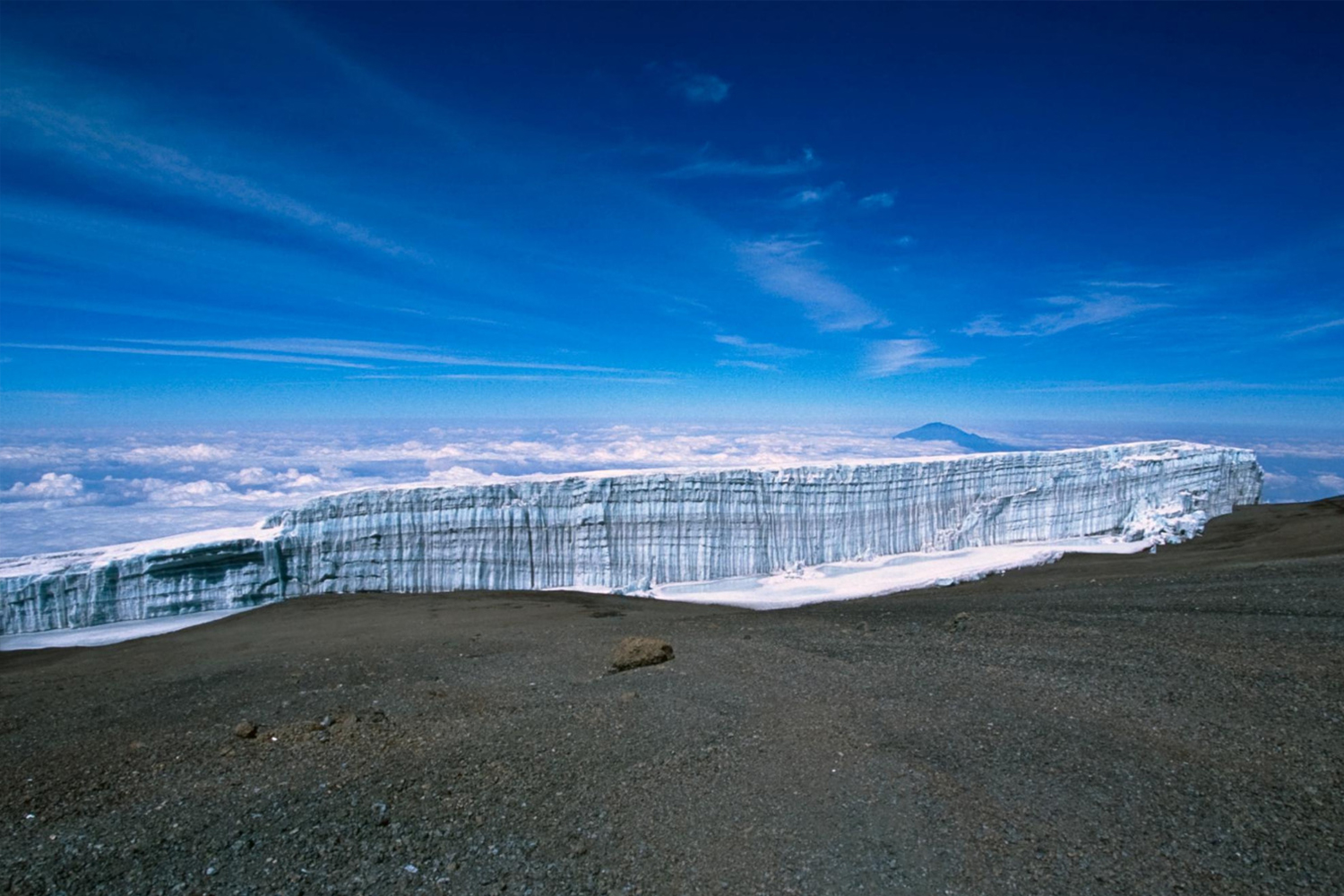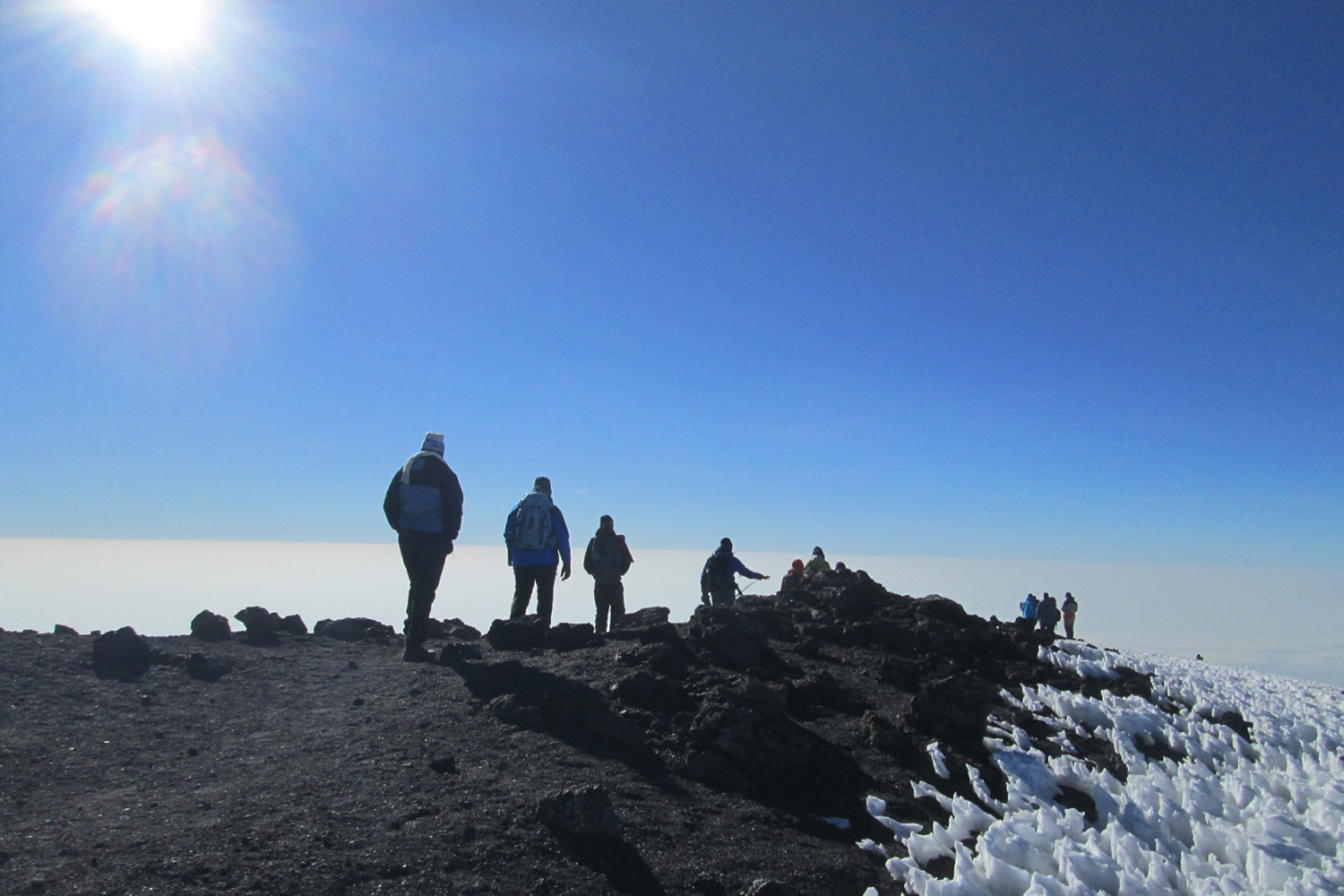Kilimanjaro
TREKKING PACKAGES
At the widely acclaimed forefront of high altitude performance, PASSIONATE GUIDES TANZANIA has pioneered unique ascent strategies carefully conceived to maximize a climber’s personal safety and summit chances on Africa's highest mountain and the world's largest non-massif mountain. Our Arusha-based mountain staffs are divided into over 20 close-knit teams each led by an English-speaking chief guide who reports daily from the mountain, directly to our Expedition Coordinator. The management who are available night and day to deal with contingencies and to oversee the planning and preparation of all expeditions demands consistently excellent performance.
At the widely acclaimed forefront of high altitude performance, PASSIONATE GUIDES TANZANIA has pioneered unique ascent strategies carefully conceived to maximize a climber’s personal safety and summit chances on Africa's highest mountain and the world's largest non-massif mountain. Our Arusha-based mountain staffs are divided into over 20 close-knit teams each led by an English-speaking chief guide who reports daily from the mountain, directly to our Expedition Coordinator. The management who are available night and day to deal with contingencies and to oversee the planning and preparation of all expeditions demands consistently excellent performance.
Just to clarify and confirm your understanding, there are in total of 6 recognized ascent routes on Mount Kilimanjaro, although we do not recommend them all:
- Lemosho
- Machame
- Marangu
- Rongai
- Umbwe
- Norther Circuit
Potential climbers need to fully understand the challenge they are considering, as this should not be considered as a ‘walk in the park’, rather a demanding trek on a mountain that will have various phases, from the initial trekking to altitude, to gaining acclimatization and preparing to summit, through to the ultimate summit push and then the descent. During a complete trek on Mount Kilimanjaro, a climber will go through a range of emotions and situations which will challenge their reason for being there, which should not be underestimated. As long as climbers fully appreciate what they are looking to undertake, and are mentally as well as physically prepared, then reaching the summit should be achievable for all climbers.
While it is true that no technical ability or experience is required to successfully summit Mount Kilimanjaro, even those who have summited more than once still treat the mountain with respect and caution. The final 600 vertical meters is very challenging and requires enormous resolve, however strong or experienced you may be.
While we cannot guarantee that climbers will summit their chosen peak (this is largely dependent on the climber) we can assure you that our teams know how best to exploit climber’s strengths and fortify them at times of weakness, and will offer them the greatest summit opportunity possible.
Based on information available in guidebooks and on the internet, the standard Lemosho route (approaching Kibo from the west) is arguably the most logical choice for a varied, stimulating and the safe ascent of Kilimanjaro. However, our most popular scheduled routes would currently be the Seven Days Rongai route followed by the 6 & 7 Days Machame routes.
On the Machame Route, most climbers opt for the 7 days route in order to err on the side of caution with respect to being well rested and adequately acclimatized prior to their assault, however timings on the 6 days route are still safe and most people with active lifestyles and who are younger than around 45 years of age, and not carrying significant excess body mass, will usually manage very well on the 6 days Machame Route.
Our Seven Days Rongai Route variations have been conceived specifically to address some of the weakness inherent in the other routes. All western and southern routes including Machame and standard Lemosho suffer somewhat from two blights; there is a slightly disappointing bottleneck effect caused by the convergence of all these routes at Barranco and the fact of there being only one way of passing over the steep Breach Wall; and perhaps more significantly, they all have a series of steep and unnecessary undulations (i.e. wasted height gain) en route to the high camp. These undulations occur after the principle climb high, sleep low feature (Lava Tower, 4642m) has already been achieved and therefore contribute nothing to acclimatization, only serving to deplete a climber's precious reserves that ought to rather be conserved for the summit bid.
Where climbers are keen to use the Marangu Route, we will recommend a 6 days Marangu itinerary where after overnighting at Horombo Huts on Day 2, on Day 3 we will arrange an acclimatization excursion from Horombo Huts up to the Camel’s Back feature where we will have a picnic lunch before completing a circuit back to Horombo for the night to ensure maximum acclimatization can be gained. We will also spend the pre-summit night (end of Day 4) at School Hut camp rather than Kibo Huts due to the poor route configuration from Kibo Huts to Gillman’s point and the overcrowding that occurs at Kibo Huts.
Depending on which ascent route climbers follow, will be decided the exit route to be used. Those ascending on the Lemosho and Machame routes MUST exit via the Mweka route, whereas those ascending via the Marangu and Rongai routes MUST descend and exit via the Marangu route.
Where climbers are looking at climbing during June / July, we would expect the weather to be predominantly dry, though the chance of rain should not be discounted. While any rain at lower slopes may mean a little discomfort, this can lead to snow at higher altitudes, which we feel adds to the experience rather than detracts from it, especially the views from a snow-covered summit. If any deep snow exists, where required, the guides will cut out bucket steps for climbers to follow.
If pushed as to our own personal preference for you, we recommend any of the unique Rongai or Lemosho Routes, as these have been configured to make maximum use of the available topography about acclimatization and preparation prior to assaulting the summit, and also have the gentlest approach to high camp before the summit assault. As a third choice, I would opt for the Machame Route.
As regards time on the mountain, 8 days is really the maximum that we would advise being spent on Kili on any route (without the inclusion of a night in the crater after summiting), as although quick climbs have poor acclimatization, on the other hand, prolonged exposure to altitude has a deleterious effect and can offset some of the advantages gained by superior acclimatization. It's a matter of striking the right balance on the mountain. To be frank, the reason why a lot of companies would encourage climbers to spend more time on the mountain is the longer climbers are on the mountain the more money they would make. For standard climbs, we have found 7 days to be the optimum.
All our mountain staff are passionately dedicated to Kilimanjaro and get no greater pleasure than in teaching climbers to how to delight in this mountain themselves, while en route to the highest point on the African continent, a place where the memories that climbers capture will be unforgettable and will be re-lived for the rest of their enriched life.
Please see here a couple of typical questions that we are often asked:
1) What is needed to climb Meru or Kilimanjaro?
- No specialist equipment, just standard walking gear. Exceptions to this are a 4 or 5 season sleeping bag (can be hired); a very warm jacket (can be hired); sturdy boots - not too heavy, and well worn in.
- No experience whatever, though some time spent trekking during your preparation phase will maximize the likelihood of your summiting. The ascent of Kilimanjaro via the trekking routes that we offer is not technical, requiring only a little scrambling at times.
- An above average level of fitness. You are strongly advised to begin training at least 3 months before you come out unless you have a particularly active lifestyle already. Jogging two or three times a week for 40 minutes is recommended as is a long hilly walk (5-8 hours) with a 10kg rucksack every two to three weeks.
- Exceptional level of determination. However strong you are you will feel like giving up sometime during the last 600 meters of ascent to the summit. You need to want the summit with a hope and a passion not found in daily life.
2) What is the procedure for Tipping?
Tipping is a universal custom on Kilimanjaro and on safari and has always constituted a significant proportion of a guide or porter’s income. It is alleged that there are even companies operating locally that do not pay their staff any salaries and that these workers rely exclusively on tips.
At the exit gate to the mountain, it is customary for climbers to tip their support staff. Ordinarily, tips are collected by one of the climbers and the total amount is handed to the chief guide who himself decides how the amount should be divided amongst the rest of the crew according to a customary scale that is determined by the responsibilities and experience of each staff member. All our chief guides are thoroughly honest and fair in this regard and it is not necessary for climbers to hand out individual envelopes to each porter, cook and assistant guide unless they specifically wish to do so. Climbers nowadays tend to tip their support crew 10-15% of what they have paid for their climb.
We would ask that all climbers do read and familiarize themselves with this information on the delicate area of Tipping and confirm that they are happy with what to expect.
Things that are included in our Advantage climb packages are:
- pick up at Kilimanjaro Airport and transfer to your hotel in Arusha - a night's accommodation both before and after your climb* - all climb costs, salaries, food, fees, etc. (excluding tips) - all transfers to the mountain and back to your Arusha hotel again - transfers back to Kilimanjaro Airport for your return flights
*Accommodation is on BB basis in our standard range hotels, i.e. either at Pazuri Inn or Arusha Planet Lodge. If you wish to upgrade to either a mid-range or luxury option a surcharge is payable.
Significant additional cost considerations are:
- flights or overland transfers to Kilimanjaro International Airport or Arusha town if approaching from Nairobi - visas - tips to the mountain staff - meals other than breakfast while in Arusha - additional nights beyond the two standard hotel nights included - hotel upgrade costs if you decide to request an alternative hotel to the standard - items considered to be non-essential, such as alcohol, beverages, cigarettes, snacks, etc.
For details of equipment that climbers are required to bring with them please see:
If a climber has any equipment deficiencies, he or she is advised to hire from us. We have an excellent range of high altitude clothing. To arrange the hire of any gear please save, amend and email to us the. Click Here
As regards equipment we provide, our Advantage Series climbs be configured to aim to ensure the best possible acclimatization and preparation for the assault by maximizing hydration, nutrition, and rest. To this end, we use mess tents, tables, and chairs for virtually all meals. This allows us to have a very leisurely lunch every day under a shelter that will typically include a soup starter, light pasta dish, and fruit pudding. We, therefore, provide the entire equipment requisite for these arrangements. We supply climbers with lightweight waterproof, breathable sleeping tents and 4cm thick sleeping mattresses. We include lightweight Portable Toilets as standard on all of our climbs.
Should climbers wish to book with PASSIONATE Guides, once we have received the booking details (including arrival & departure details, plus the advice of any additional or upgraded accommodation nights) we will request a non-refundable booking deposit of USD 100 per person plus the value of any additional or upgraded accommodation that climbers have requested. The balance is due 45 days before commencement of the tour program. If the reservation is made within 45 days of departure, the whole amount must be paid at the time of confirmation.
HOW TO MAKE PAYMENT
Through Bank to which after confirmation we send to you invoice with bank details.
We accept credit cards, which are also a simple method though; it attracts some additional bank charges of up to 5%. Should you wish to use this method, kindly do let us know to give you the procedures.
When climbing the mountain, climbers will need two luggage bags, preferably a large duffle/cargo bag and a smaller, lighter day sack, between 25 - 35 liters size. The porters will carry the larger duffle/cargo bag, while climbers carry their day sack themselves. The daypack needs to be comfortable, durable and big enough to hold everything a climber may need with them when walking, as it is unlikely that they will see their main bag from the moment they break camp in the morning to the time they arrive at camp in the evening. We have day sacks and larger bags available for hire if climbers do not have access to such, or would prefer not to take their own bags to the mountain. In an attempt to reduce the waste and rubbish on the mountain, the National Park Authority have now decreed that climbers must have their own trekking water bottles/containers for their trek and are required to decant any bottled water into them prior to progressing through the entry gate.
Items a climber would potentially carry in their daypacks -
Sweets Water (3 liters water carrying capacity - bladder system, with insulated hose, recommended, or water bottles) Camera Sun hat/sunglasses and sun cream Travel Pack Toilet Tissues and Wet Wipes Waterproof jacket and trousers Walking poles Small personal Medical kit, including chopstick, for ready access and non-altitude specific medicines. (Your guide will be carrying a much more comprehensive medical kit.)
The porters will carry the larger duffle/cargo bag, which will contain climbers other personal equipment and clothing for their time on the mountain. This large duffle/cargo bag does not need to have shoulder straps (in the form of a rucksack) as the porters will either carry this large bag on their shoulders or head. The porters will have their own rucksack for their personal and company gear. We request that climbers please ensure that whatever 'luggage containers’ they bring to the mountain, have been adequately waterproofed, or have a waterproof cover. As well as providing waterproofing for the 'containers' themselves, we request that climbers further waterproof the items inside them by means of using a liner inside the container.
Please also be advised that given the terrain that climbers will be walking in, their 'luggage containers' can suffer wear and tear. You can expect that at the end of a trekking day a porter will lower the luggage he has been carrying on his head, to the floor. Sometimes, even with care applied, this luggage will end up being dropped and possibly torn against the volcanic rocks, with possible damage also being caused to possessions inside the bag, which are not adequately protected.
The Kilimanjaro National Park has a maximum carrying weight per porter of 25kg, which includes the porter's personal gear, which is assumed 5kg, plus 5kg of company gear. Thus, the load they carry for the climber should not exceed 15kg.
Tanzania Trekking Packages
by Passionate Guides
 06
06 DAYS
Marangu Route
Tanzania Trekking tours 06 DaysThe 6 days Marangu route climbing also referred to as the “Coca-Cola” route, as it is considered to be the easiest path on the mountain, given its gradual slope and direct path.
 07
07 DAYS
Rongai Route
Tanzania Trekking tours 07 DaysThe remote Rongai route begins on the side of the mountain close to the Kenyan border, running on the dry northeast side of Kilimanjaro. It takes a long drive to get to the starting point.
 07
07 DAYS
Machame Route
Tanzania Trekking tours 07 DaysThe 7 Days Machame route , also known as the “Whiskey” route, is the most popular route on Kilimanjaro. Machame’s draw is in its scenic beauty.
 08
08 DAYS
Lemosho Route
Tanzania Trekking tours 08 DaysThe 8 days Lemosho route is considered the most scenic trail on Kilimanjaro, granting panoramic vistas on various sides of the mountain. As one of the newer routes, Lemosho is a superb choice.

